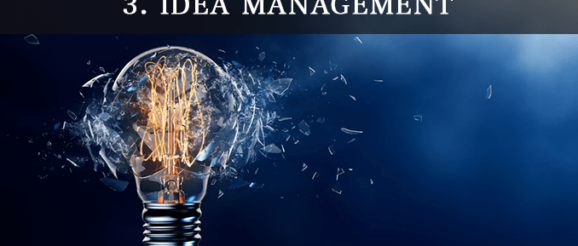The innovation process dismantled (part 3) – Håkan Ozan on innovation thinking

With needs well understood and innovation partnerships established we enter the creative phase of idea management. But idea management is not only about coming up with creative schemes, it is equally about systematizing, evaluating and improving new ideas.
The idea management phase consists in itself of three highly important sub-phases. With pre-described needs as input, now is the time to combine solutions from other fields into creative solutions in the field at hand, because being creative is about combining existing (and preferably unexpected) solutions to new non-existing ones. So the three key phases are:
I’ll walk you through them and their sub-processes so that it becomes clear how they are interconnected and what value they add.
1. Idea generation
Idea generation is the problem-solving stage. This is when we try to ensure that diversified perspectives get their say to find creative and innovative ideas to solutions to our needs. So here we must ensure that we have the right mix of participants, that they have access to the right information, and that they are in the right atmosphere and context.
Plan
Ensuring the right circumstances is crucial for proper idea generation. First we must make sure that we have the right people, are provided the right information, act in the right environment, have access to the right equipment, etc. Good idea generation is not coincidental.
Inspire
To help the participants get their creativity on we need to provide the best possible circumstances. There are some ingredients to help out.
Generate
This phase is often the focus, and too often the sole focus, of any brainstorm-like activity. Facilitating the idea generation process is delicate and vital. This part can go on forever, but usually reaches a point in time where the marginal benefit decreases and where the facilitator needs to draw the line. This stage incorporates the activities of creating, collaborating and documenting ideas.
2. Idea management
Even if the idea generation phase may produce some creative and hypothetically valuable ideas they will not be ready for deployment just because they have been conceived. They will also need to be improved and evaluated and face reality in terms of feasibility.
Cultivate
When ideas have been generated they also need to be further refined into more feasible versions. As the idea generation process generally does not end up with one single idea as an outcome, the contributed set of ideas needs to compared, combined, capitulated, refined, and so on. Different ideas have different pros and cons and it is important to find and define the individual values to see how they resolve different issues and possibly create greater greater value when combined. So there are certain systematic sub-process steps to do this.
Select
We then go into idea portfolio management mode. We now need to start comparing the formalized ideas to other ideas in the organization to decide which ones to take further, but also to get them formally stored and managed. We use the criteria set in the innovation strategy and go through a a couple of pre-set steps.
3. Idea validation
All ideas then finally need to have their market value projected and evaluated. Ideas are great, but if there is no satisfactory economic or social market value, nobody will be willing to invest in them.
Validation
We need to verify the idea for feasibility, competitiveness, profitability, etc. so before taking it to the more costly conceptualization phase we validate it against the original need (problem) as defined in the first phase, the competitive situation, and how it could be positioned and marketed.
Incubation
The first stage of serious business planning. This is technically pre-incubation where a basic business idea and business model is developed. Here we may need to add training, coaching, IP management, etc.
